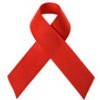By Nicholas Olson, POZ Intern
 |
| An LGBTQ Pride-colored map of Denmark |
This June, we celebrated LGBTQ Pride along with the Supreme Court decision that marriage equality is a right established by the Fourteenth Amendment. The United States is the latest in a growing number of countries to formalize marriage equality. Interestingly, the earliest government recognition of same-sex couples actually has a connection with HIV.
In 1989, Denmark became the first country to officially recognize same-sex couples. This groundbreaking move took place during the first decade of the AIDS epidemic, a time when a diagnosis was mostly considered a death sentence (modern HIV treatment came along in 1996). Denmark, like other countries across the globe, began to see AIDS cases in the 1980s. Hospitals throughout the country had diagnosed 239 people with HIV and opportunistic infections, and witnessed 137 AIDS-related deaths by 1987. This sparked political debate to figure out how to prevent more of these tragedies.
One result of that discussion was that the Danish government officially recognized same-sex couples. The logic went like this: By encouraging men who have sex with men (MSM) to adopt traditional, monogamous, committed relationships, officials hoped to lower the men’s number of sexual partners--and thus the potential HIV transmission rate.
These were not full marriages, though. They were an early form of unions that provided some rights and privileges, which policy makers gradually updated and increased to be equivalent to “marriage” in Denmark. In fact, the last privilege to be added was simply the title, “marriage,” which finally came in 2012.
Not that this relationship recognition was the country’s sole HIV prevention plan, Denmark went on to create a policy of “cooperation and inclusion,” in which citizens were educated about HIV and safer sex practices through widely distributed, public campaigns such as advertisements, PSAs and pamphlets. The government recognized its interest in keeping its citizens healthy as an absolute priority, rather than placing shame or blame on people who had contracted the virus. Today, the Joint United Nations Programme on HIV/AIDS (UNAIDS) considers the stigma around HIV in Denmark to be low, which may be due in part to these prevention and education campaigns. The Danish government acted on the absolute need to spread information to the people as it became available, in order to slow the spread of the virus. This came largely because of the public outcry against government inaction and the conflicting ideas they witnessed in the United States during the early days of the epidemic.
In addition, starting in 1986, an activist group called STOP AIDS began dispersing condoms throughout one of Copenhagen’s major, central cruising grounds--they placed the prophylactics in small birdhouses. This helped make condoms accessible for people in the heat of the moment--all they needed was to find a stocked birdhouse. It was not a state-approved action, and it caused quite a lot of controversy at the time as it was seen as condoning public sex, but it made safer-sex material more easily accessible for free in public settings.
UNAIDS estimates that in 2013 about 5,800 people were living with HIV in Denmark and only about 5 percent of the most at-risk populations are HIV positive, which is very low compared to, for example, MSM in the United States.
Denmark seems to have adopted an excellent strategy in the early days of the HIV epidemic. Moreover, the country’s health care system should be an inspiration for the U.S. system. All people need health care. The Danish universal health care system has helped ensure people living with HIV get the care they need, and Denmark’s other early actions, such as formally recognizing same-sex couples, have substantially reduced the spread of the virus.







Comments
Comments